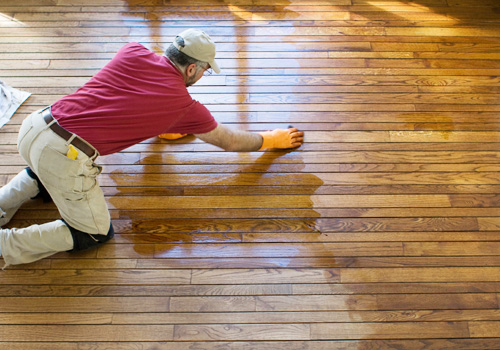Refinishing hardwood floors helps to preserve the wood and make the boards shine again.
Though they require refinishing, preserving hardwood floors makes economical sense because they can last for hundreds of years, according to the National Wood Flooring Association.
Types of Finishes for a Hardwood Floor
The type of finish you choose depends on the look you want for your floor. Durability is also an issue. Your choices are:
Polyurethane: Either oil- or water-based, polyurethane comes in various degrees of luster and has a sort of plastic look. Both finish types darken or even yellow wood, although some newer water-based products don’t darken as much. Poly finishes are excellent for high-traffic and high-moisture areas. However, if the finish gets nicked or gouged, it’s extremely difficult to spot-repair.
Varnish: Varnish comes in a variety of lusters, from matte to glossy. The higher the gloss, the more durable the surface. Varnish often darkens with age. On the up side, you can make spot-repairs to varnish.
Penetrating sealer: This offers a natural-looking finish that brings out the wood’s grain; however, it may darken over time.
Penetrating sealer offers good protection, especially when waxed. However, it’s less durable than polyurethane or varnish. It’s the easiest of the three to spot-repair, though.
Ideally, you want to seal the floor on the same day you finish sanding to prevent the open wood surface from absorbing moisture.
For best results, apply the stain (if desired) and sealer with a sheepskin applicator. Be sure to apply the sealer evenly, and use enough to cover the surface. But be careful not to apply too much. Excess sealer doesn’t soak into the wood — it pools on the surface. If you fail to remove it, it leaves an ugly, ugly spot.

